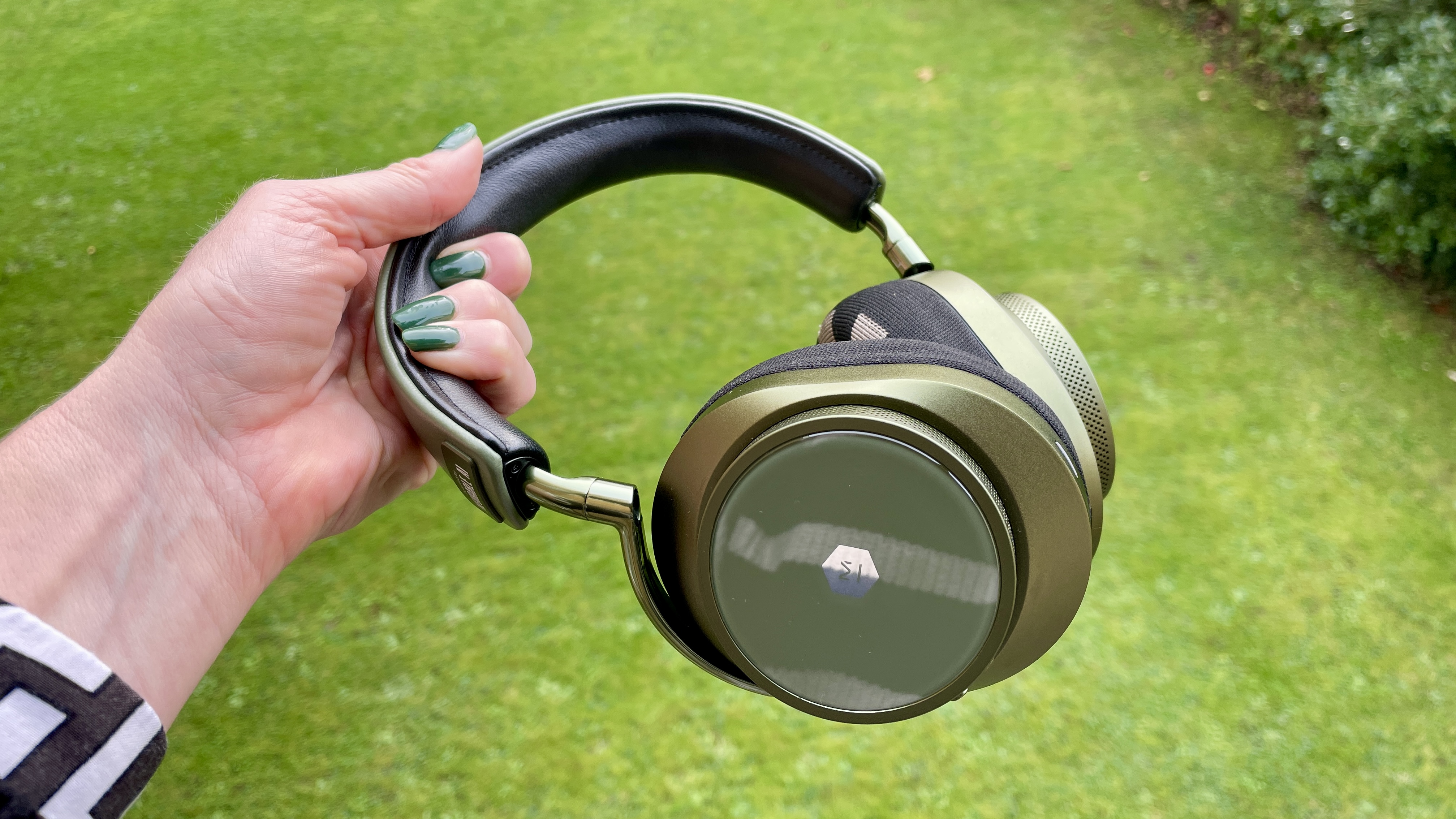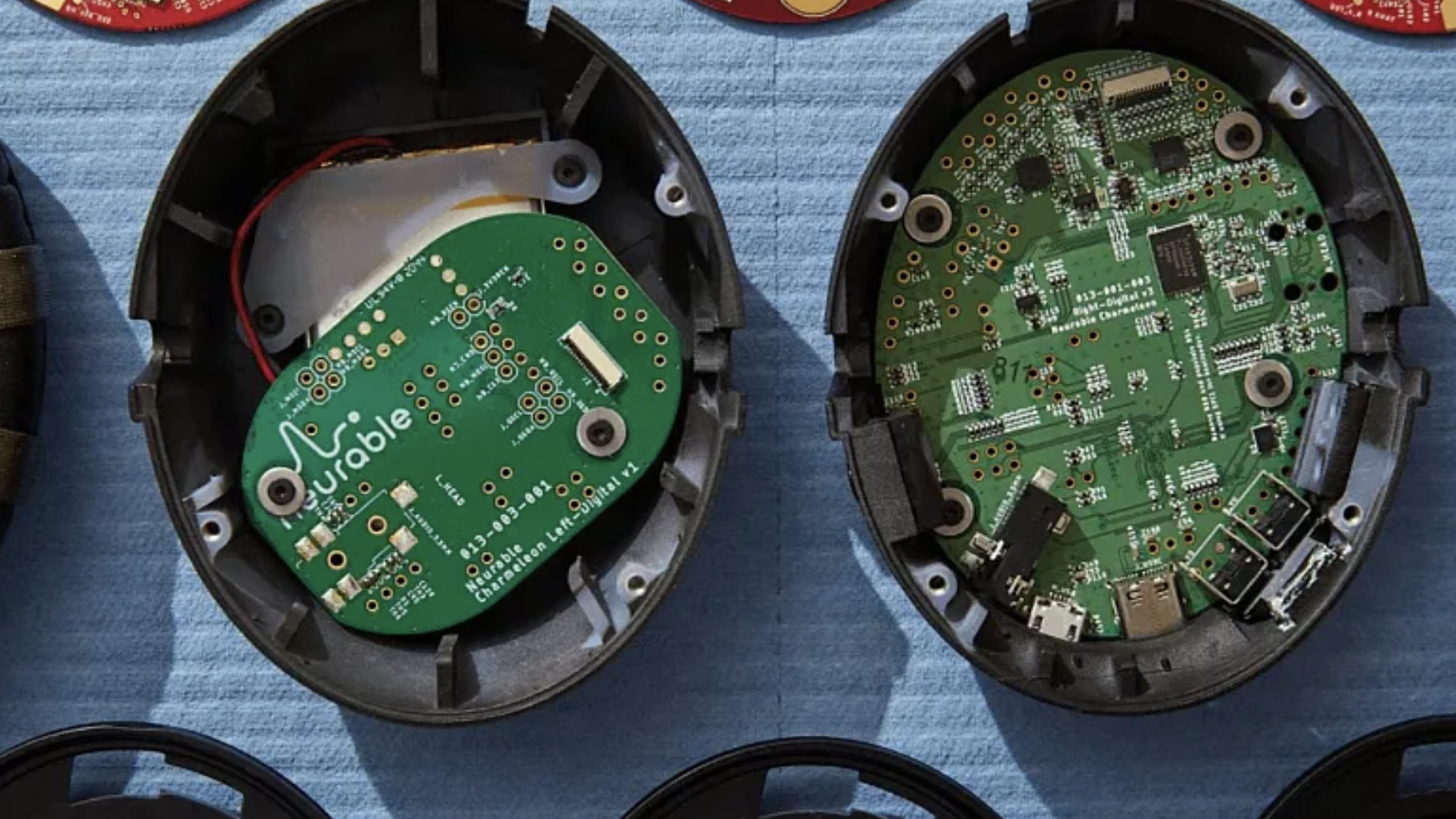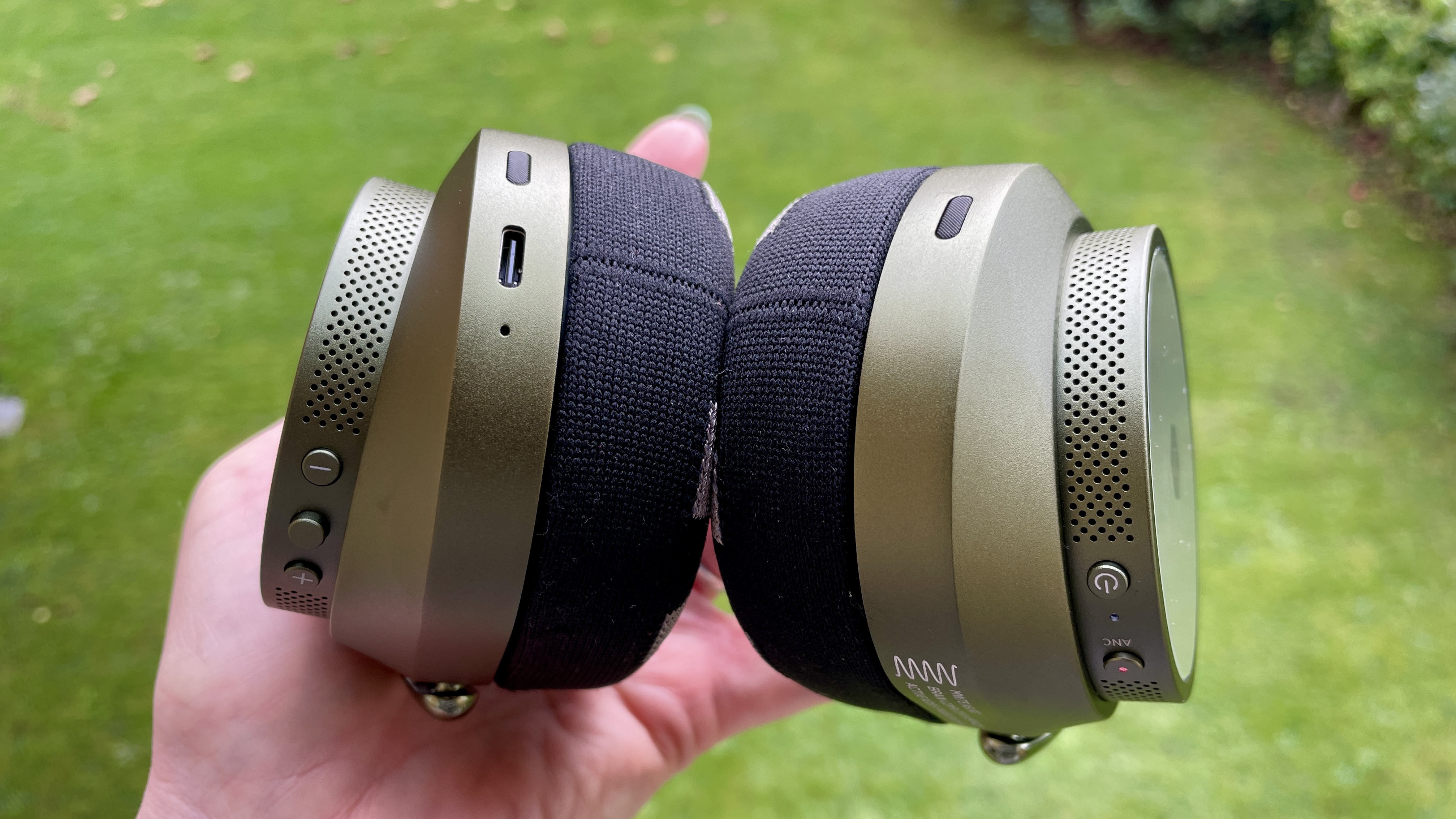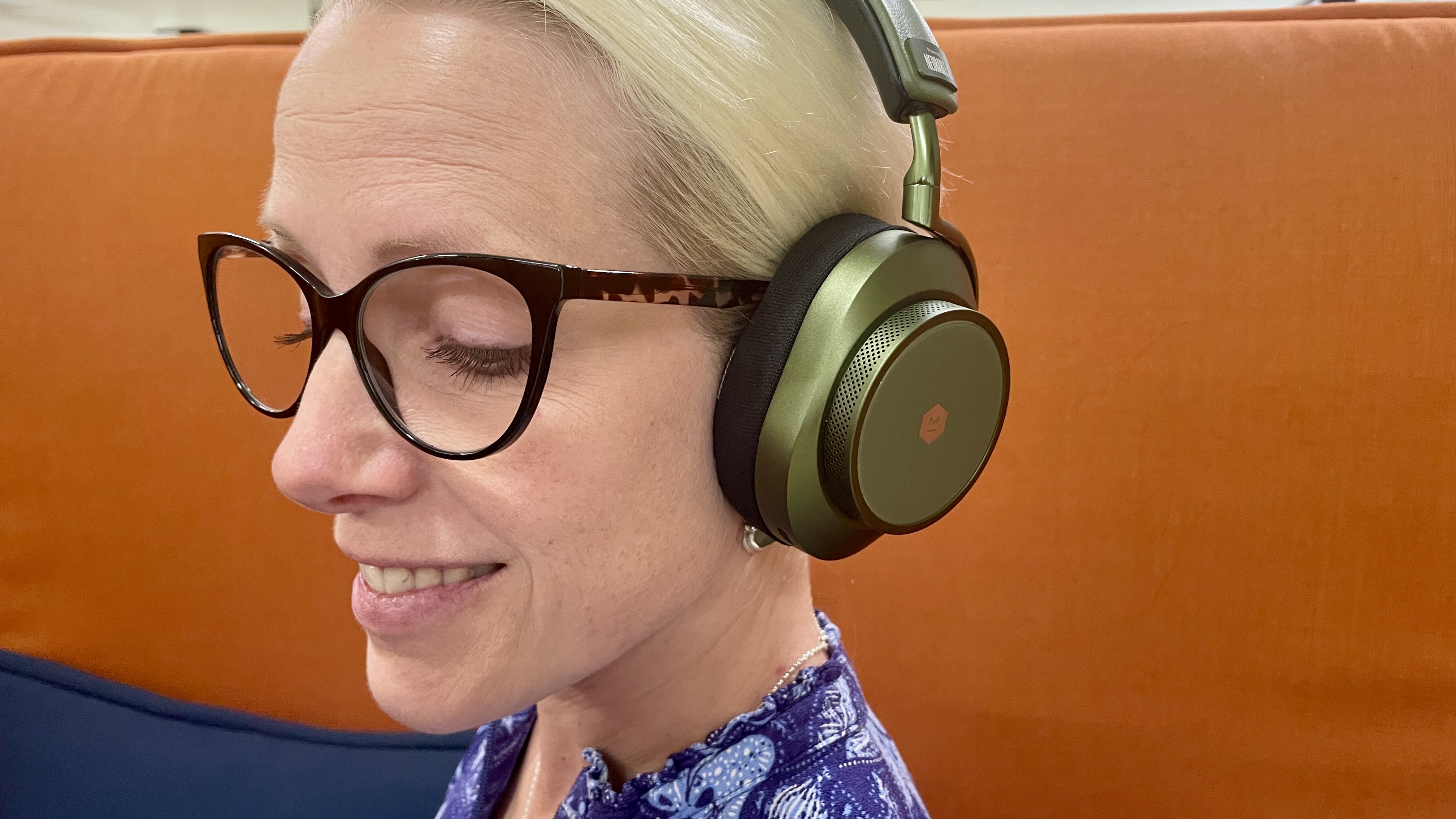I tried the brain-hacking headphones and if you struggle to focus, you should too
No electric shocks, but do prepare to feel acutely judged by your cans

I'm going to be honest: as soon as I agreed to test the headphones with 12 electroencephalography sensors woven into the ear cups, aka the Neurable x Master & Dynamic brain-hacking headphones, I regretted it.
I had nightmares about my Editor-in-Chief secretly accessing my brain-computer interface readings to label me a has-been and a slacker ("The data's all here Scarrott; your brainbox just isn't functioning like that of a journo in her 20s anymore… and we need results here, Scarrott! Young, hungry and relevant!") on two separate nights. Would I be unceremoniously shown the door on account of my erratic levels of possibly peri-menopausal focus?
My fears were compounded when I was prompted to not only state my age during setup (how very dare they) but also disclose whether I had any history of anxiety, depression, migraines or several other brain-related health issues.
Suffice to say, my headphones have never asked me that before.

And now, a test! I'm invited to set up a "session" – ie. a period of time during which I'm to work on a task, whether it's compiling a report, reading, embroidering, anything that requires a degree of concentration. I can give the session a title, so glibly I key in "Write (at least 50% of) an experiential about testing these headphones" when the Neurable app tells me to.
Oddly, at no point am I encouraged to cue up any music by the Neurable app, which seems sad given that these are a talented pair of Master & Dynamic MW75 headphones at heart (although they also look a lot like the v2 MH40s from the brand). Still, I deploy what I call my Best and Most Badass Black Friday playlist anyway. Surely that will see me cruising into a Grade A flow state, right?
For the next 27 minutes – or up to this exact point in the article you're now reading (ie. nowhere near 50% of it) – I write. On three occasions, I have to refer to the kindly-supplied MW75 Neuro Reviewer's Guide. I do this chiefly to spell-check 'electroencephalography' but also to understand exactly how many EEG sensors we're dealing with here, and precisely where they are in a product that looks nothing like one of those scary skull-caps you've seen and everything like a pair of high-end headphones.
Get daily insight, inspiration and deals in your inbox
Sign up for breaking news, reviews, opinion, top tech deals, and more.
During this 27-minute stretch of work, my line manager pings me a Slack message (an internal business messaging app, if you're fortunate enough never to have been yoked to it) about our meeting later, during which we'll "tie up last year’s SMART goals and talk about what Q1's goals will probably look like", so I should think about that before then. At 13 minutes into my session, I'm asked to supply a review template to a sub-editor I've contracted to help ease the backlog of reviews I've commissioned; at 24 minutes in, I'm reminded by another colleague that I need to compile a script for a TikTok I've agreed to film on Thursday. I must remember to wear something presentable for that, which might be tricky since I'm part-way through moving home and, of course, most of my clothes are now 150 miles away…
But lo! It's 1.10pm and I have a Lunch and Learn to attend. I hit "End" on my inaugural MW75 Neuro "session".
And to explain just how badly my brainwaves just performed, let's look at how Neurable quantifies what it calls our three "Focus Levels".

Neurable's focus levels are derived directly from your brainwave activity, says the company, and reflect how "engaged and challenged" you are while attempting to complete a task. The app reads your gray matter's performance across the course of a session and gives you a color-coded graph reading, based on three levels of focus.
High focus is defined as "a state where you're mostly focused on a single task that's highly engaging and challenging. When you work on a single task, you give it your full attention and don't waste mental energy switching tasks. With some practice, maintaining focus on your goals will become a habit."
Doesn't sound too difficult, does it?
Now, medium focus: is described as "a state where you are focused on a task (that) requires a moderate amount of skill. Or you may be switching between related tasks, such as assembling information to generate a report."
Lastly, low focus: this is, Neurable warns, "a state where you may be jumping from idea to idea, like a brainstorm. Short periods of low focus may be caused by a distraction or a context switch unrelated to a task."
The sun's rays don't burn until brought to a focus

Neurable also offers an interesting nugget of information concerning the "long ramp-up time" of some tasks – see also: getting in the zone – and says these times will likely show up as a period of low focus at the start of your session.
Of course, it's all about goals (think of the Neurable app as Strava for your brain), and to that end, Neurable's app gives you two points for every minute you achieve high and/or medium focus, and one point for every minute you spend in low focus. The goal? A nice round 100 points per day, however you get there – although it doesn't take a genius to see that the aim is to work smarter, not longer.
So, how long was I hitting peak focus during my 27-minute blast of work – a session during which, I think we can all agree, I wrote a pithy and engaging opening of this very feature? Zero minutes. Not one. Furthermore, only 30% of the time – a paltry 8 minutes! – was spent in a state of medium focus. The rest of the time (a whopping 19 minutes of my life I'll never get back) I'm told I worked in low focus, largely distracted, and with my attention being pulled every which way but loose. I mean, it's an outrage. What am I giving you, my beloved and respected readership?

Such was the veil of despondency that descended upon me, I couldn't bring myself to start another session for the rest of the day. One crushing set of stats per 24 hours is plenty, thank you very much…
Before long, 6pm rolled around and I found myself pouring a glass of wine for my long-suffering other half and almost immediately recounting my disappointing day. He listened, as he knows to do, patiently and intently. Finally, when I'd berated myself for long enough, he quietly responded: "You know none of that is your fault, though."
I looked at him sharply. "It was my brain though, wasn't it? Nobody else was wearing those beautiful headphones but me!"
Even as I stalked off, I knew he'd got it. He always gets it; that's why I keep him around. Neurable's guide had told me quite plainly that to achieve precious minutes in its "Best Attention Span" flow state, I must be "focused on a single task that's highly engaging". But a journalist's work is not so simple! One could argue that any professional working in a fast-paced team environment, whether it's customer-facing, office-based, or in the US Air Force (which incidentally, Neurable is working with), must be constantly contactable and infinitely distractible. It's all thanks to the various screens we are paid to gaze at, and the life we're trying to live in the gaps.
If you've never been to Jane Austen's house in Hampshire, England, I'd highly recommend it – it even contains the 27cm-wide, 12-sided walnut table upon which Austen penned her six novels prior to her death in 1817. Yes, six novels. And I know for a fact she never had to answer a Slack message, record a hurried WhatsApp voice note to prove she'd not disappeared off the face of the earth, or accept a Google Calendar invite before working out how to close a chapter. A fairly lonely life? Perhaps. But look at what she was able to achieve! Austen died at 41. I'm 45 and have yet to write my first novel.
What's the solution to all of this? I could set my status to 'Do Not Disturb' on Slack (tried it; doesn't work) or put my various smart devices in a box and later claim I was stuck in a tunnel. Only, that's the quickest way to get myself labeled highly strung at best, or wholly unreliable at worst. I don't do it because I'm trying to be a good colleague, yet, I'm achieving the direct opposite, as that Neurable session proves. It's no wonder we struggle to focus fully on a given task when at any moment we might allow ourselves to be sideswiped by a fresh one.

A productive mind? That would be a quiet mind…
Am I at fault for struggling to concentrate, or are the odds simply stacked too highly against me? Literally dozens of distractions and responsibilities are open to me concurrently at this very minute, and I'm not sure my headphones can help with the cause – although they can record the symptoms beautifully. I must stress that I think what Neurable is trying to do here is admirable; I'm thankful for the wake-up call.
The MW75 Neuro can (and do) tell me to take a break in future sessions – and my focus while reading in bed is practically perfect, I'll have you know – but this makes me a little sad. Why should I need my headphones to tell me it's OK to have a rest? Is it because we're hard-wired to applaud working too hard, perhaps?
I expected to be terrified by what Neurable's headphones learned about me when trialing them. None of that. I think the MW75 Neuro are very good headphones, as is the well-meaning and thorough tech within them. It's just that sometimes the truth hurts, and we've only got ourselves to blame. We need to learn to switch off.
Ultimately, they'll have you questioning not the ethical issues of headphones that can read your mind, but whether any of us can actually work like this long-term (especially with AI lurking over our shoulders) without mental burn-out. Arguably, we're only 20 or so years into the omnipresence of the internet and it's not getting any easier to disengage. What should I do to change it? How can I switch off? Is that even possible now? Asking ourselves these questions can only be a good thing.
Also, I've yet to be called into a meeting and fired by my EiC. But let's see how this particular feature performs…

Becky became Audio Editor at TechRadar in 2024, but joined the team in 2022 as Senior Staff Writer, focusing on all things hi-fi. Before this, she spent three years at What Hi-Fi? testing and reviewing everything from wallet-friendly wireless earbuds to huge high-end sound systems. Prior to gaining her MA in Journalism in 2018, Becky freelanced as an arts critic alongside a 22-year career as a professional dancer and aerialist – any love of dance starts with a love of music. Becky has previously contributed to Stuff, FourFourTwo and The Stage. When not writing, she can still be found throwing shapes in a dance studio, these days with varying degrees of success.